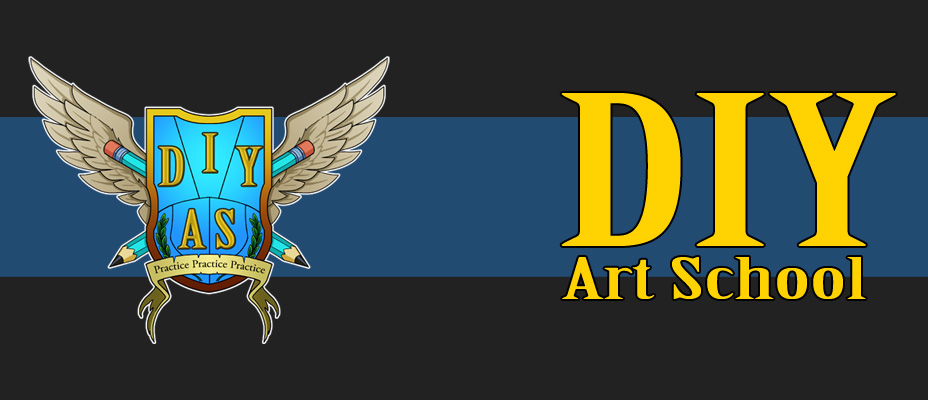Making the proper space
Making the proper space means finding a place that you can comfortably work each day. Ideally you want a place devoted to your making and studying of art. Working at a kitchen table where you’ll have to contend with distractions, and the constant moving of your art materials (so the table can be used for other activities) is going to be difficult in the long run. You really need some kind of desk devoted to your study.
Absolutely ideal is an entire room, as eventually you may want to include easels, books, places to store paint and other supplies, etc. Workable is a distraction free corner of a room, that gives you enough space to not feel cramped. You need to be able to relax and concentrate.
Your choice of desk is personal, but many artists like the option to tilt the table top to better see the work (such as this inexpensive model but I suggest looking around and buying the best you can reasonably afford, because your desk is where you'll spend 90% of your time ). You also need to have plenty of quality light. Incandescent lighting, regular light bulbs, add warmth to colors you see. This means when you paint, your color choices may actually be too cool under more neutral day light, because they now lack the warmth you saw under that warm lighting. By contrast, you get the opposite effect if you work under fluorescent lighting, and you add too much warmth to counter the cooler color of light. The solution is a combination lamp, a lamp that uses both an incandescent light bulb and a fluorescent bulb at the same time to give you balanced color (like this one here). This also has the advantage of having a high quality and well balanced swing arm making it easy to get the light exactly where you need it.
A proper table, lighting, and a comfortable chair are the absolute basics, but there are a few other things to consider. Some shelving comes in handy for reference and art books. Some place to store your supplies will help keep your work space less cluttered. Some kind of cabinet is good, but an artist's taboret is even more flexible. A taboret is a small cabinet on wheels, which makes it mobile, and it is a great height to use the top of it to keep paint and other supplies close at hand while you work, whether at a table or easel. If you've never seen one, these examples will help you visualize what I'm talking about: an inexpensive option and a nicer wooden one.
Lastly, a solid easel helps make your work space complete. If you've only ever worked from a table top, you may not think you need an easel, and for small work you may be right. For larger work, there's no contest. Even though a good drawing table has a tilted surface to allow you to see your work more properly, an easel holds it right in front of you at the proper viewing angle, and the larger the piece, the more important that is. A skewed viewing angle will create all sorts of perspective problems in your artwork. Additionally, when working with wet paint, a piece laying flat is going to collect a lot more dust and debris than one standing upright. Stay away from light weight tripod easels like this one, as these are not stable enough for making art, and are instead more suited to simply displaying art on a short term basis. A more appropriate beginner easel is more like this aluminum student quality easel. Many art schools buy this type in bulk, because they are not too expensive, yet are fairly durable and sturdy. They won't handle very very large sized pieces of art, I'd estimate 2'x3' as being the largest I'd try to manage on one, but most students aren't likely to venture into that size range anyways.
Making the proper time
I mean it when I say you need to MAKE time. I assure you, you will rarely just “find time” if you don’t make an effort to prioritize working and studying. As hard as it may be, this will sometimes mean turning down social engagements, or planning other activities accordingly. Remember, if you were attending an art school, your time would be spoken for with schedules that you need to keep. It is all too easy to fall into the line of thinking of “I don’t have time” unless you MAKE it.
There is of course more flexibility than you’d get at an art school though. You can choose the days and hours that best work for you. Try to be consistent. Don’t cheat yourself out of time by starting late too often, or stopping too early. If you can put in 5 or 6 hours most days you should see fast progress, but if you can only do 2-4 that is still a great block of time. A solid longer block is far far better than many shorter blocks. If at all possible plan at least one long day a week (say 10-12 hours). Those are great days for bigger projects that take more time to prepare and set up, or just allows you a good solid day of progress.


No comments:
Post a Comment